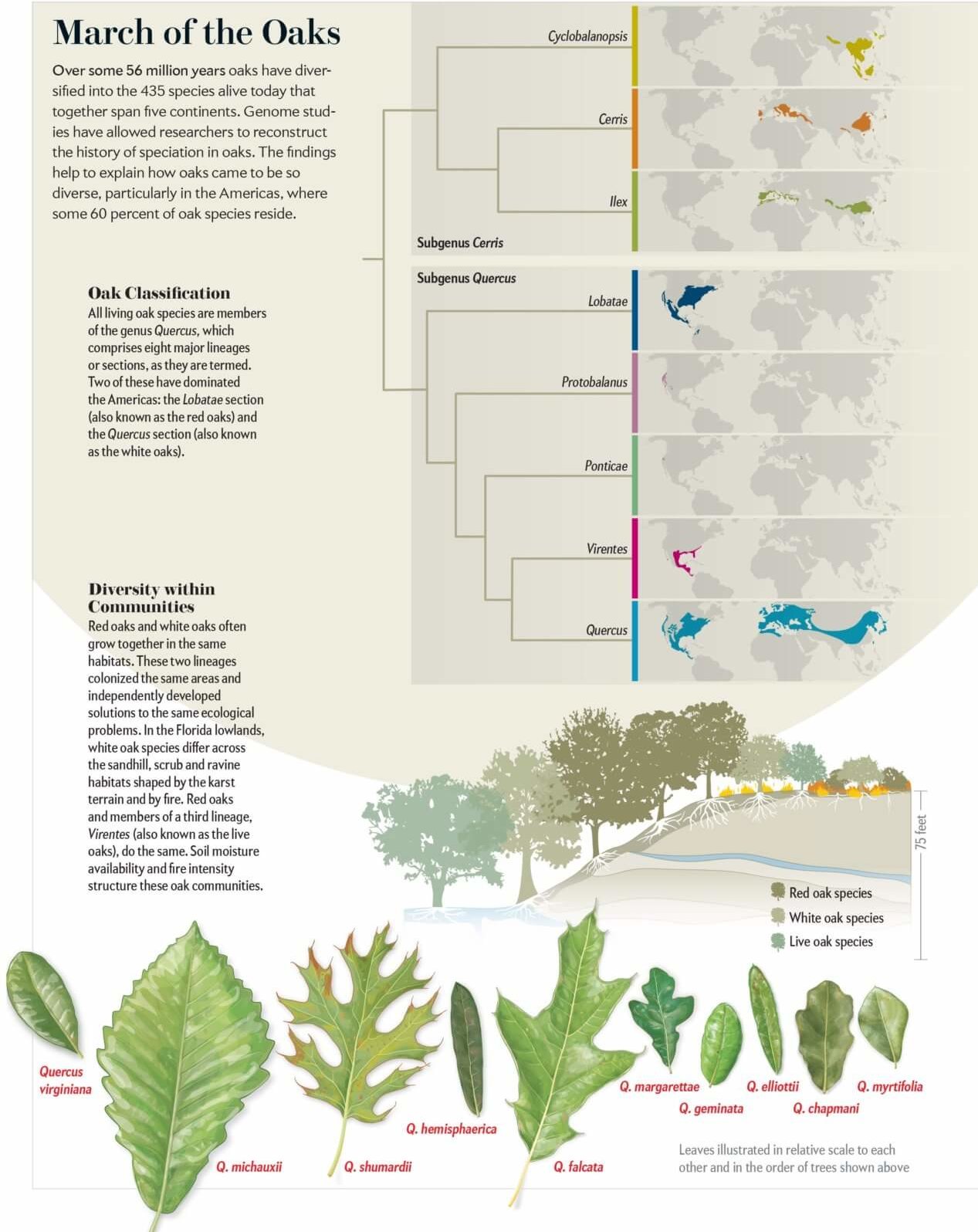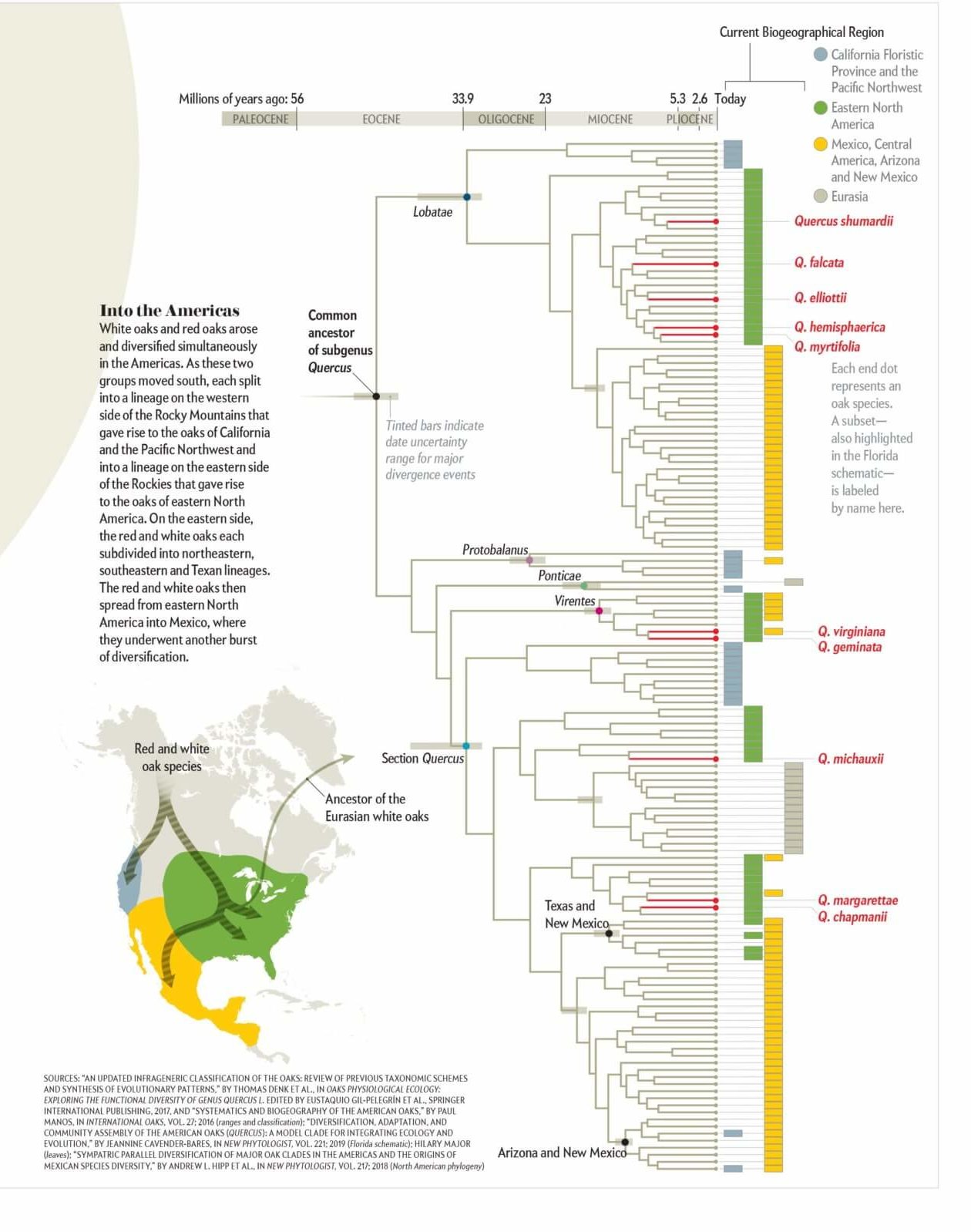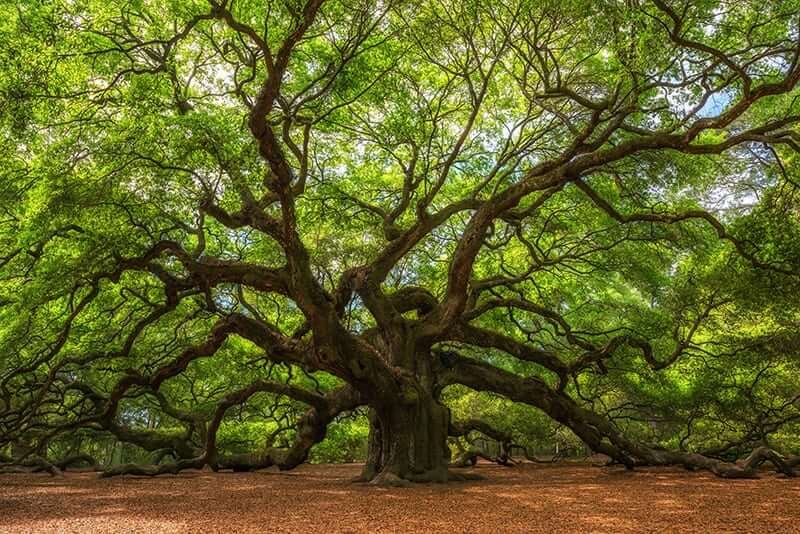Over the course of some 56 million years, oaks, which all belong to the genus Quercus, evolved from a single undifferentiated population into the roughly 435 species found today on five continents, ranging from Canada to Colombia and from Norway to Borneo. Oaks are keystone species, foundational to the functioning of the forests they form across the Northern Hemisphere. They foster diversity of organisms across the tree of life, from fungi to wasps, birds and mammals. They help clean the air, sequestering carbon dioxide and absorbing atmospheric pollutants. And they have shaped human culture, feeding us with their acorns and providing wood to build our homes, furniture and ships.
For decades scientists could only speculate about much of the evolutionary history of oaks because of gaps in their fossil record and limitations of the biomolecular techniques used to infer evolutionary events from the DNA of living organisms. But recent advances in genome sequencing and analysis have allowed us and our colleagues to reconstruct a detailed picture of the origin, diversification and dispersal of oaks. It is a remarkable evolutionary success story, one that will have important implications for predicting how these essential trees will fare in the face of climate change—and for developing management plans to ensure their survival.

































